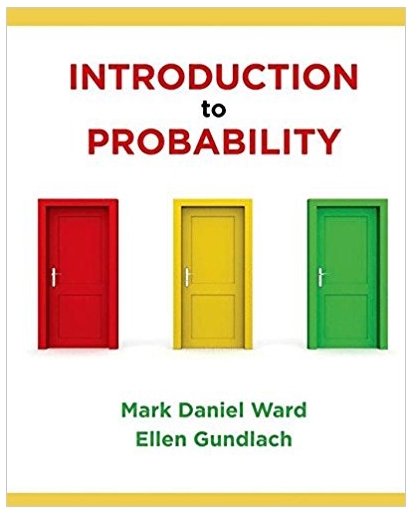Answered step by step
Verified Expert Solution
Question
1 Approved Answer
STAT 225 Fall 2016--Homework 4 -------DUE in class on Monday, October 31, 2016. ONLINE studentsdeadline 11:59 pm on October 31, 2016. SHOW WORK!!!!! NOTE: for
STAT 225 Fall 2016--Homework 4 -------DUE in class on Monday, October 31, 2016. ONLINE studentsdeadline 11:59 pm on October 31, 2016. SHOW WORK!!!!! NOTE: for any question asking you to determine a probability----you MUST write out a probability statement using proper notation!!!! 1. The average life of particular type of light bulb used at a university is 8,000 hours. There are 10 light bulbs in a classroom. In order for a class to be held in the room, 7 or more light bulbs must be working. Each light bulb works independently of the other light bulbs in a classroom. a) Name the distribution of a light bulb's life and specify the parameters. b) What is the probability that a single light bulb works for over 8,000 hours? c) Given a light bulb has already operated for 5,000 hours, what's the probability that it will operate more than 11,000 hours total? d) Given a light bulb operates no more than 12,000 hours, what's the probability that it breaks before 7,000 hours? e) Assuming that all the light bulbs in a room were installed at the same time, what is the probability that a class can be held in that room after 8,000 hours of the light bulbs' operation? 2. X is a random variable with a probability density function given by a) b) c) d) e) f) g) 3. Determine the value of c to make this a valid probability density function. Write out the CDF for (). What's the probability X < 5? Find ( = 2.3). Find the probability that X is between 0.6 and 2.2. Given X < 2.5, what's the probability that X <1.5? Calculate expected value of X. It takes Jenny an average of 90 seconds to solve a level 1 Sudoku puzzle. You have asked Jenny to demonstrate her Sudoku skills and bring her a new level 1 puzzle to solve and you will time her. Let S be the amount of time it takes Jenny to solve the Sudoku puzzle. a) What are the parameter(s), distribution and support of S? b) What is the probability it takes Jenny between 85 and 110 seconds to solve the Sudoku puzzle? c) Given it has been 80 seconds and Jenny has not finished the Sudoku puzzle, what is the probability it will take her less than 115 seconds to solve the Sudoku puzzle? d) In a contest of 10 minutes, there are several level 1 Sudoku puzzles for Jenny to solve. Let K be the number of level 1 Sudoku puzzle that Jenny can solve in 10 minutes. She solves each cube independently of the others. What are the distribution, parameter(s), and support of K? (Hint: also think about minutes vs seconds.) e) What is the probability that Jenny solves 6 or 7 level 1 Sudoku puzzles in the 10 minute contest? f) If Jenny solved 8 level 1 Sudoku problems in the 10 minute contest (all attempts are independent), what is the probability that she solved 2 of them in the first 120 seconds of the contest? 4. Suppose you are interested in bidding on a parcel of land and you know that one other bidder is interested. The seller has announced that the highest bid in excess of $25,000 will be accepted. The other competitor's bidding price for the land will vary evenly from $25,000 to $32,500. a) b) c) d) e) Let B be the competitor's bid for the parcel of land. What are the distribution and parameter(s) of B? What is expected value and standard deviation of the competitor's bid? What is the probability that the competitor's bid will be less than $30,000? What values mark for the middle 50% of the competitor's bids? Suppose that you bid $29,000. What is the probability that your bid will be accepted? (i.e. that yours will be the winning bid) f) The competitor will not go higher than $29,750. Knowing this, what is the probability that his actual bid is above $27,200? g) You want the probability that your bid is higher than the competitor's bid to be at least 0.95. What should you bid to ensure this? 5. Textbook, Exercise 24.4, page 314 6. Textbook, Exercise 24.22, page 317 7. Textbook, Exercise 31.2 (Broken Chalk), page 409 (note: this problem is mislabeled in text as Active Child, but it is really about broken chalk) 8. Textbook, Exercise 32.4 (Waiting for a Bus.), page 424-5
Step by Step Solution
There are 3 Steps involved in it
Step: 1

Get Instant Access to Expert-Tailored Solutions
See step-by-step solutions with expert insights and AI powered tools for academic success
Step: 2

Step: 3

Ace Your Homework with AI
Get the answers you need in no time with our AI-driven, step-by-step assistance
Get Started


